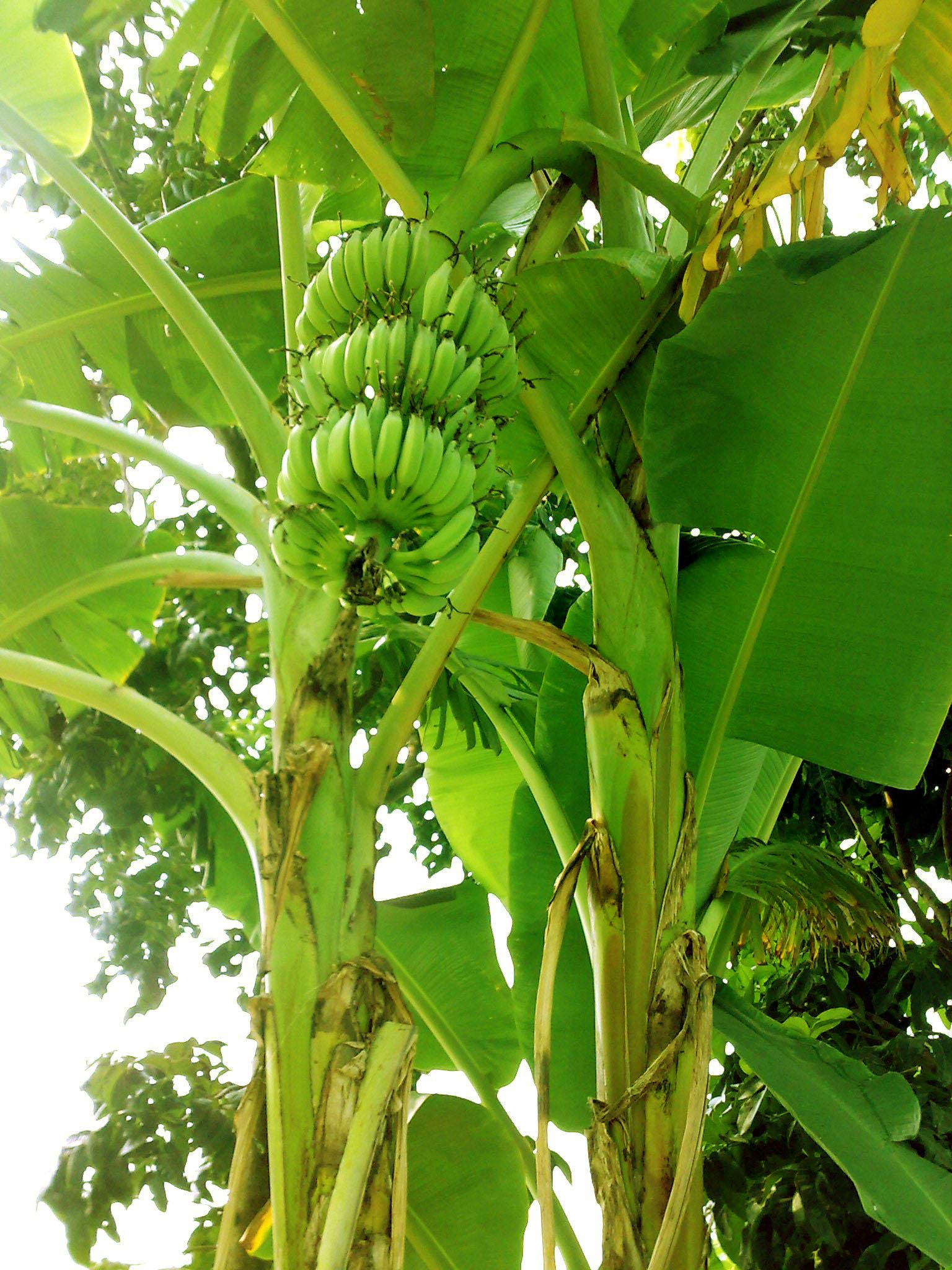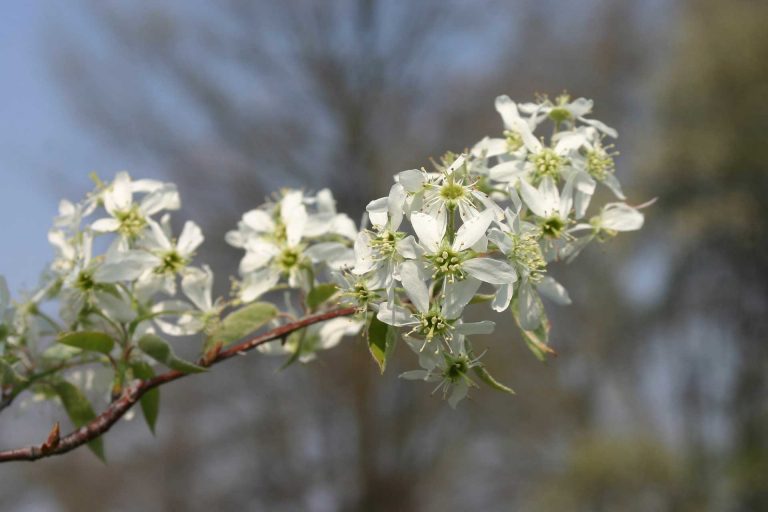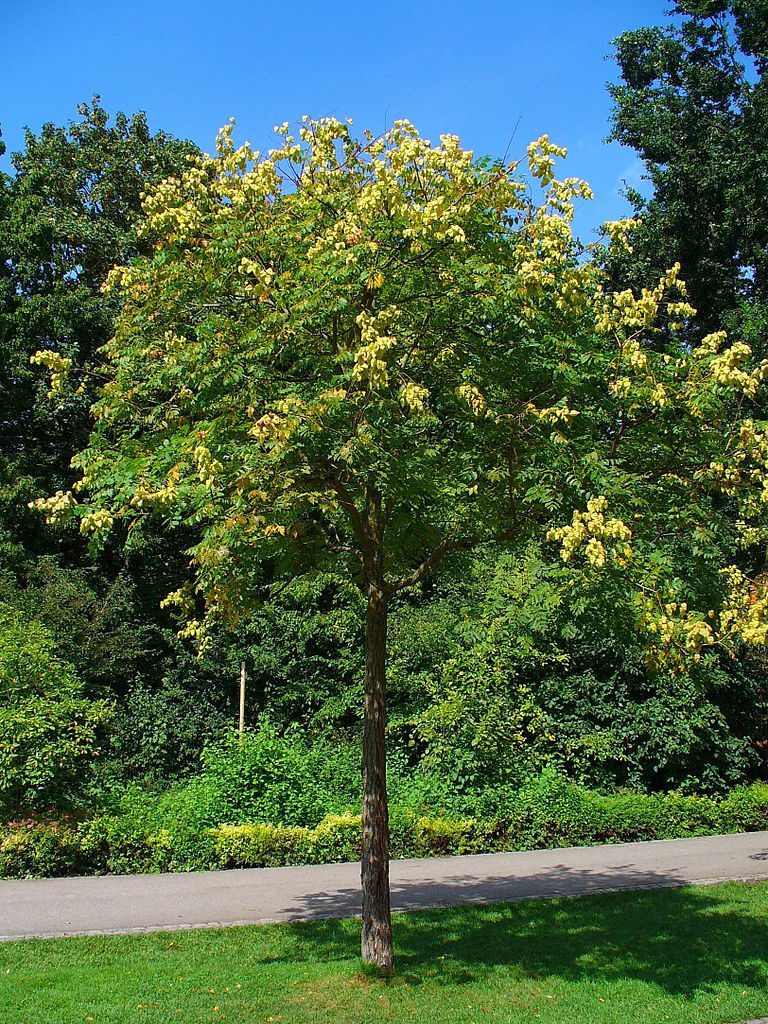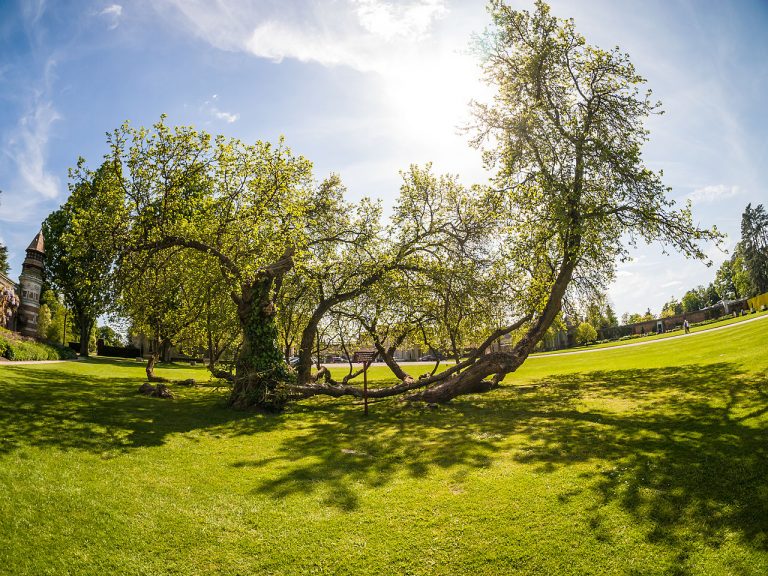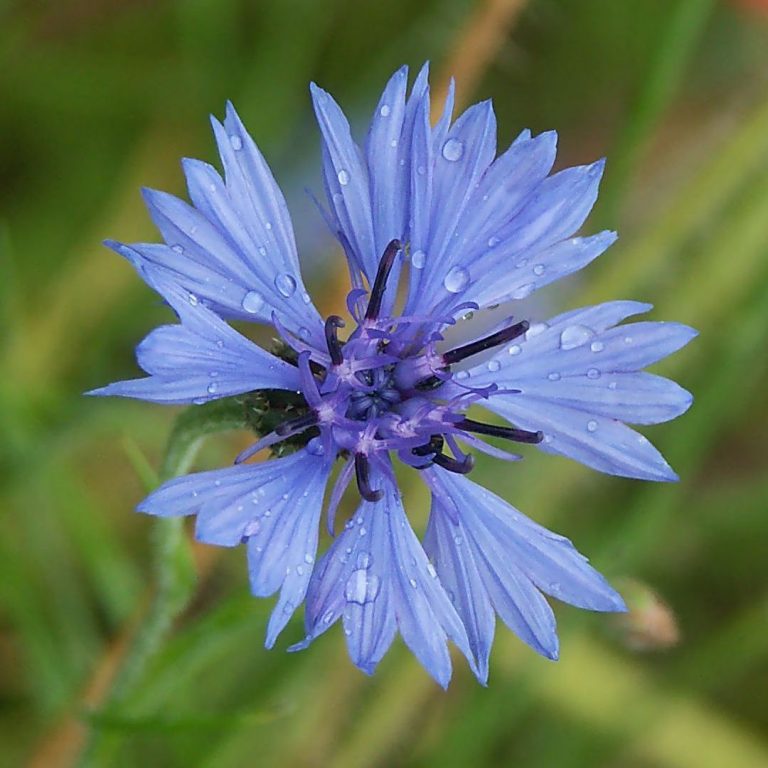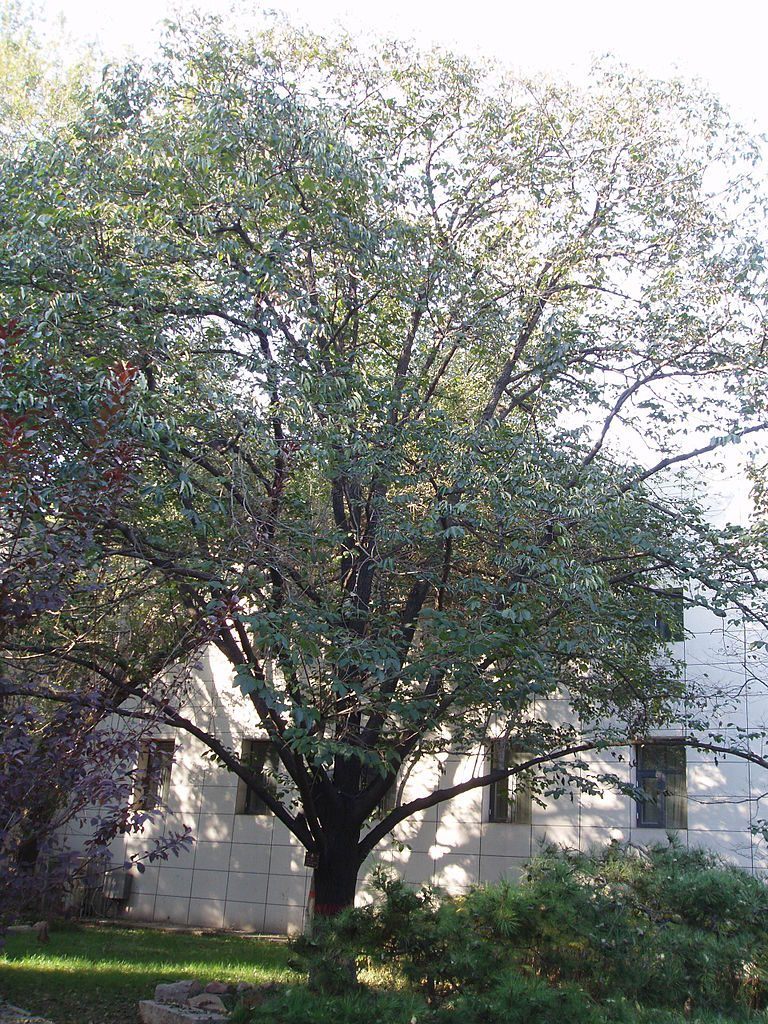Banana
Scientific Classification
| Kingdom: | Plantae |
| (Unranked): | Angiosperms |
| (Unranked): | Eudicots |
| (Unranked): | Rosids |
| Order: | Rosales |
| Family: | Rosaceae |
| Genus: | Malus |
| Species: | M. Domestica |
| Binomial Name: | Malus Domestica |
A banana, botanically named berry is an edible fruit. It is cultivated as different kinds of large, herbaceous blossoming plants, belonging to the genus Musa. (In certain countries, they use the banana for cooking, where it is called by the name plantain.) Bananas vary in color, size, and firmness, however, normal bananas are curved in cross section and elongated, and their flesh is soft and rich in starch content. It has a rind covering it in colors like yellow, green, brown, or purple when it is ripe. This fruit grows in clusters hanging from the tree top.
Anatomy
The banana plant belongs to the largest among the herbaceous blossoming plants. All the parts of the banana plant above the ground grow from a formation which is called a ‘corn’. Banana plants are generally sturdy to a certain extent and are tall, usually, erroneously, called a tree. What we see as a trunk is a ‘false stem’ or pseudostem.
Bananas
Grow in different kinds of soil, provided it has a minimum depth of 60 centimeters and in properly drained and moderately loose soil. The banana plant leaves are made up of a ‘stalk’ (petiole) and a blade (lamina). The base of the stalk is wide in the form of a sheath; the pseudostem is composed of the tightly packed sheaths, This is all that supports the plant. The edges of the sheath join together, to form a tubular section. As and when fresh growths appear, they force apart the edges in the pseudostem’s center. Based upon the type and growing modes, the cultivated banana plants differ in height. The majority of them are 5 m. (16 ft.) in height and range in height from ‘Dwarf Cavendish’ plants which are more or less 3 m (10 ft,) to ‘Gros Michel’ which are 7m (23 ft.) or even more. The leaves of the banana plant are oriented in a spiral form, they grow to lengths of 2.7 m (8.9 ft.) and of width 60 cm.(2.0 ft.). The leaves get torn easily by the wind, giving it a grand appearance!
Growing at Home
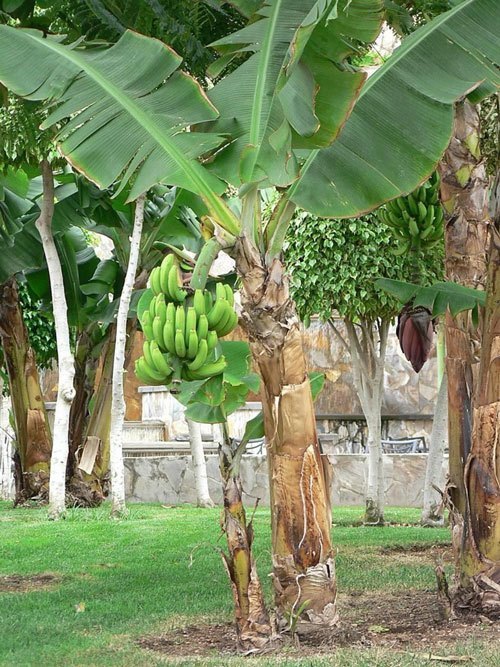
Photo by: Rosendahl
Soil for Planting
The best growth of Bananas is when they get 12 hours of direct strong sunlight every day. It is possible for them to grow even when the sunlight is not that bright, however, see that your plantation gets the maximum sunlight.
Select a location where the drainage is good. Even though bananas need sufficient water, it is liable to rot if the water does not drain sufficiently.
In order to verify whether the drainage is proper, make a hole to a depth of 0.3 meters (1 ft), fill water in it and wait for it to drain. Once it is empty, refill it, and after one hour take the measurement of the left over water. The ideal drainage for banana plants of water is 7 to 15 cm per hour.
- A raised garden bed or adding 20% perlite to the soil assists drainage. This is especially important if you are using a banana plant that does not yet have leaves, or had the leaves removed for shipping. Leaves help evaporate excess water.
- The ideal soil acidity for bananas is between pH 5.5 and 7. Acidity pH 7.5 or higher can kill the plant.
Planting
- Every banana plant needs a hole to a minimum depth of 30cm (1 ft.) and width 30 cm (1 ft.). Bigger holes are needed where the wind is strong (however, sufficient quantity of soil is needed.
- If there are shrubs or trees other than the banana plants having hefty roots where they are liable to draw the banana’s water, space them to a minimum of 4.5 m (15 ft.) from them.
- Several banana plants planted together at correct distances from each other maintain advantageous temperature control and humidity levels. If possible, plant them in clusters, spacing them at 2 to 3 m (6.5 to 10 ft.) or even a big clump of banana plants spaced apart at 3 to 5 m (10 to 16 ft.).
- If the banana plant is of dwarf type, plant them closer.
- When you are planting indoors you need a bigger or equal sized pot.
- Mostly fill the hole with loose, rich soil. Slope the hole to a few centimeters for proper drainage.
- Never add potting soil, or your usual garden soil except when you are definite of its suitability. Soil mix that is used for cacti gives good outcome, if not inquire from growers who are growing the same variety of banana.
- Keep the roots covered, and cover the base 1.5 to 2.5 and about 1 inch of soil, and see that the leaves are pointed in the upward direction. Tamp the soil to firm the soil, avoid too much ramming.
Watering
Water regularly, but avoid excess watering. Usually bananas die due to lack of water, however, excess water too can cause root decay.
- When the weather is warm, in the absence of rain, it is required to water your plant every day, except when the surface of the soil 1.5 to 3 cm (0.5 to 1 in) is dry. A finger test is good prior to watering.
- If the plant remains in the water for sufficient time, decrease the amount of water each time as this can lead to decay of the roots.
- When the temperature is cool and the growth of the banana is declining, watering is required, just once or twice a week, watch the moisture content.
- The leaves assist in evaporating the left over moisture, therefore do not soak the young under grown plant with leaves yet to grow, only moisten it.
- Feed water the ring of the fertilizer sufficiently to enable it to enter the soil.
Temperature and Humidity
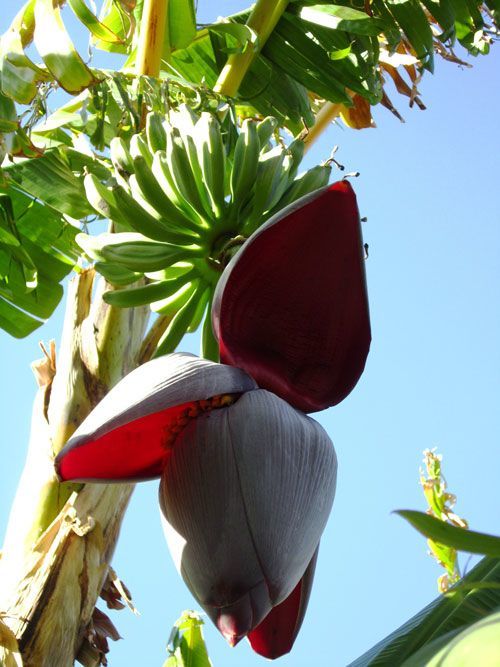
Photo by: Dick Elbers
Maintain the humidity to a minimum of 50% and retain it. The befitting temperature during the day is 26 to 30 ° C (78 to 86°F), and the temperature at night, not less than 20°C (67°F). The normal temperature is between 14 and 34 ° C (57 and 93 ° F)
Flowering and Maturity
When the banana plant has reached its maturity, it ceases producing fresh leaves and starts to bring out an inflorescence or flower spike. A stem is generated which develops within the pseudostem, bearing the underdeveloped inflorescence, till at last it springs out at the top. Every pseudostem generally grows a single inflorescence; this is otherwise called ‘banana heart’. (At times they produce more. A rare plant in the Philippines brought out 5 inflorescences). The pseudosstem dies following fruiting. However, off shoots generally grow from the base, which makes the plant a whole perennial.
Care
It is necessary to add fertilizers a little away from the trunk, once a month, Fertilize with compost and manure (fertilizer purchased from the store or a blend of them both). Fertilizer is added soon after planting in a uniform manner in the form of a ring, right round the banana plant. This is done every month.
Add mulch. For the recycling of the nutrients to the soil, discard the dead leaves and banana plants and chop them up into pieces and put them round the good banana plant, apart from this add waste accumulated in the yard and ash from obtained from wood.
- Inspect the mulch very frequently and discard the weeds growing with them. This is very essential for the banana plant’s growth.
- Young plants need fertilizers at the rate of 0.1 to 0.2 kg (0.25 to 0.5 lbs) a month, this will increase to 0.7 to 0.9 kg (1.5 lbs to 2lbs) for grown up plants. This increase is done gradually, as the plant grows.
- In case the temperature is reduced to 14°C (57°C) or in case the growth of the banana plant is arrested for a month, then avoid fertilizing that month.
- Normally the fertilizers have a label marked (N-P-K) this indicates the quantity of Nitrogen, Phosphorus (potash), and Potassium in the fertilizer. As for Bananas, even though all the nutrients are needed, it needs more of Potassium. Use a fertilizer that is balanced (with more or less equal quantity of all the three), or according to the need of the soil.
- Never use manure prepared the previous week, since the heat emerging from it will damage the plant.
Watch out for discolorations, pests and dying leaves. When you notice diseased plants,pick them and give them treatment without delay, if not dig up them. Inspect the plant for pests and remove them immediately, if any. Deficiency of Potassium and Nitrogen are the 2 most frequently occurring nutrient problems in bananas, therefore, make a study of the symptoms of these.
- Deficiency in nitrogen (N) shows symptoms of pale green leaves or very small leaves; a reduced rate of growth, leaf sheath turning reddish pink or bunches of fruits becoming smaller.
- Deficiency in potassium (K) shows symptoms of a quick change in the color of leaves to orange Yellow and consequently the leaves die, and the flowering time is delayed, causing broken or small leaves or fruit-bunches of reduced size.
When your banana bunch is heavy or when the wind is very strong, it is likely to topple the tree; therefore, give your banana plant the required support. The 3 different easy methods are:
- Bottle Method and Wire Rope method. Take a plastic bottle and lance its bottom. Pass through the mouth of the bottle a very strong twine or a very long wire. Smash the bottle in order to make it soft and flexible. Prop the stem of the banana on the bottle and use the wire/ twine to pull the stem a bit more upright and tie the wire/twine to a strong support.
- Single Bamboo Method: Take a long 3m (10 ft.) bamboo pole or some other durable and strong material. Take a piece of wood of thickness 10 centimeters (4 inches) and width 60 centimeters (2 in.) and cut it Y shape. Rest the stem in the middle of the ‘Y’ and force the bamboo a little up making the stem a wedged into the ‘Y’ firmly. Force the other end of the bamboo (the Bottom) deep into the ground and shovel the sand around it firmly.
- Double Bamboo Method: Take 2 bamboo poles of length 3 m (10 feet). Tie one end of the poles together with a strong wire of length 30 cm (1 in.). Stretch out the poles to form an ‘X’ shape, rest the stem at the short end, force it upwards to some extent, making it stiff. Force the other ends of the poles into the ground and shovel sand around it firmly.
Pest and Pesticides
- Cases of certain acute diseases of banana plants are: Panama Disease/Fusarium Wilt; Bacterial Wilt/ Moka Disease; Black head/ Topping Disease/Root rot; Banana Bunchy Top; and Black Leaf Streak.
- Cases of acute plant pests are: Banana Aphid; Corn Weevil; and Mealy Bugs. Major fruit pests are: Red Rust Thrips; Flower Thrips and Scarring Weevil.
Harvest Month and Storage
Bananas are cultivated when they are ripened and raw in the artificial method. Dwarf bananas are harvested when they are 11 months.
Normal harvesting is done after 14 months following planting. Tall bananas are harvested normally from 14 to 16 months. A bunch normally takes 90 to 120 days to get full-grown; this varies according to the practice of culture and the climate.
The indication of the maturity of the Bananas is when the fruit changes its color from deep green to pale green and when the top leaves get dry. The mature fruit swells and the end of the flower falls by the touch of the hand. The gaps between the fruits get filled. There is a metallic sound when you tap the fruit.
Varieties
- Robust
- Dwarf Cavendish
- Other varieties.
Uses Of Banana Trees
Cooking
People grow Banana trees, mainly for their fruit that is rich in potassium and vitamins. Many of its parts, like the fruit, flowers and the trunk core, are used in cooking.
Uses other than cooking:
Many people extract the core juice and use it to treat jaundice and severe problems of kidney stone.
Its leaves are equally valuable, as they serve cooking, and as a medium for serving food (This continues as a hygienic system in South India
Their shoots and the leaves are used in textile making.
Rug makers use its trunk for its fibers.
The bark and fiber are excellent mediums to make special-purpose paper.

Having discovered a fondness for insects while pursuing her degree in Biology, Randi Jones was quite bugged to know that people usually dismissed these little creatures as “creepy-crawlies”.

